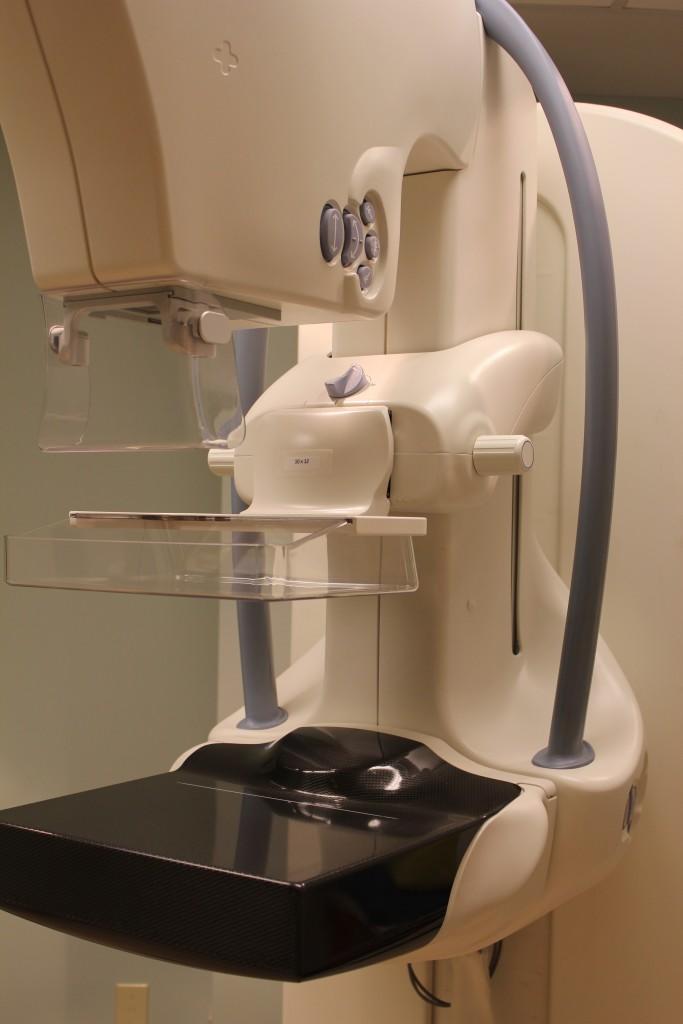Breast Cancer and Mammography Myths Debunked
by Julia Bailey MRT(R), Screen for Life Mammographer
 Mammogram machine
Mammogram machineKnowing the truth about breast cancer and mammograms could help to save your life or those of your loved ones. October is Breast Cancer Awareness Month, so it’s a great time to provide breast cancer screening knowledge and break down some of the most persistent myths about mammograms.
Myth: All mammograms are painful.
Truth: The compression involved in a mammogram is generally described as temporary discomfort, not painful. Compression is necessary to ensure a high-quality image, a small trade-off for the temporary discomfort. If a woman does experience pain during compression, she should let the technologist know so they can work with her to make her more comfortable.
Myth: All breast cancers can be detected on a mammogram.
Truth: No screening test is perfect, and mammograms are no exception. Many factors, such as breast density, can influence the resulting image making detection of possible breast cancers more difficult. However, mammograms are the best test healthcare providers have to find breast cancer early; sometimes up to three years before it can be felt by a women or her health care provider.
Myth: Having a family history of breast cancer means you will get breast cancer.
Truth: Women with a family history of breast cancer are in a higher risk group, but most women who are diagnosed with breast cancer have no family history. Statistically, only 10 percent of individuals diagnosed with breast cancer have a family history of the disease.
Myth: Finding a lump means you have breast cancer.
Fact: Only a small percentage of breast lumps turn out to be cancer. Many times these lumps are cysts or fibrous breast tissue, not cancer. Any time a women notices a breast change such as a lump, it should not be ignored. She should go and see her healthcare provider for an exam and ensure any appropriate diagnostics are ordered. Other breast symptoms women should be on the lookout for besides a lump include: nipple discharge, nipple changes, persistent redness of the skin and any dimpling of the skin.
Now that you are well informed, it is also important to ensure you and your loved ones are up to date with your breast cancer screening. The Ontario Breast Screening Program (OBSP) offers women aged 50 to 74 a screening mammogram every two years, following the guidelines endorsed by Cancer Care Ontario. Benefits of the program include having the results of a mammogram being sent directly to the client as well as their primary care provider, being sent a reminder letter when it is time to go for a mammogram and coordinated follow-up by OBSP if needed because of an abnormal mammogram. Women can either be referred by their healthcare provider or self-refer to the program by calling
1-800-461-7031. For more information on breast cancer screening visit:
http://www.tbrhsc.net/cancerscreening.